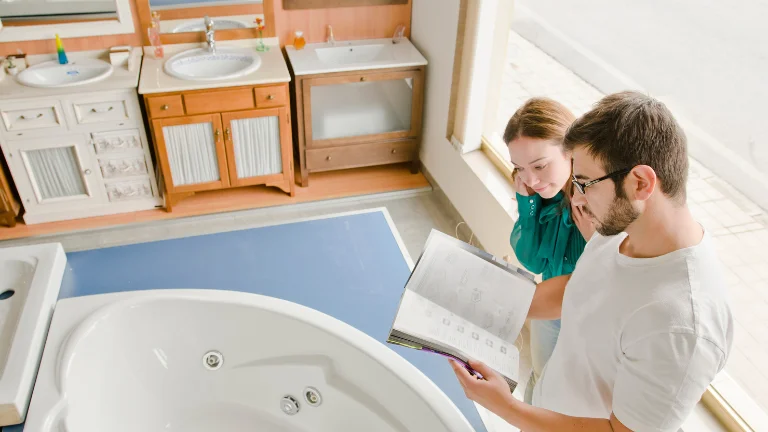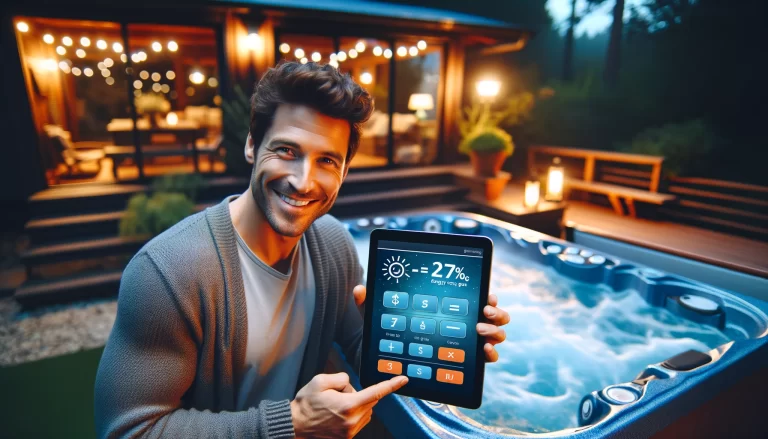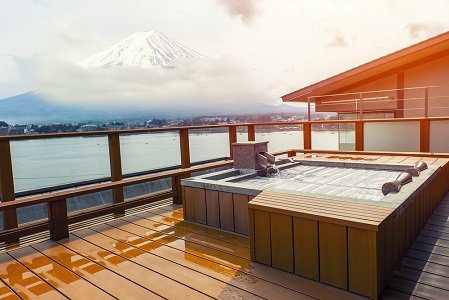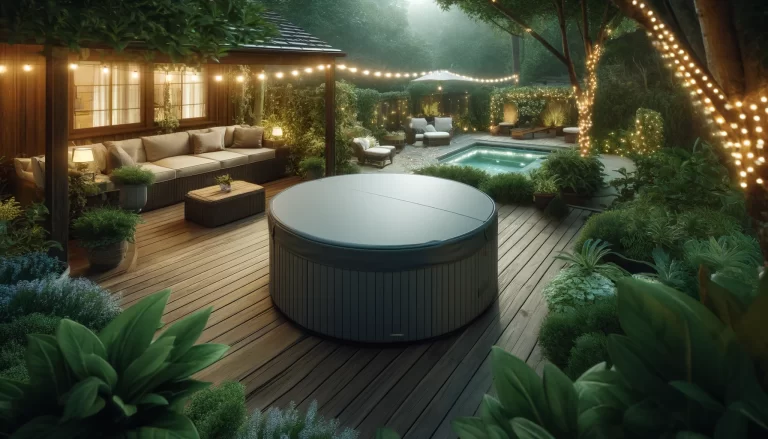Hot Tub Ozonator Pros and Cons: What You Need to Know
A hot tub ozonator is a device that helps keep your spa water clean by producing ozone gas—a powerful natural sanitizer.
It reduces your need for chlorine, improves water clarity, and can make your hot tub safer and easier to maintain. It’s ideal for spa owners looking for a low-chemical, eco-friendly solution.
Hot tub ozonators are becoming increasingly popular among hot tub owners to improve water quality and reduce the need for harsh chemicals. In this enlightening article, we shall delve deep into the realm of hot tub ozonators. Discover the secrets behind their optimal performance and efficiency.
Benefits and Drawbacks of Hot Tub Ozonators
An ozonator can be a game-changer when it comes to improving the water quality in your hot tub. It’s necessary to weigh the pros and cons of the Hot Tub Ozonator before deciding on this beneficial water treatment option.
Understanding the pros and cons is the initial step to achieving the perfect hot tub experience, whether you are looking for pristine, crystal-clear waters or concerned about the environmental impact.
How its work:
Ozonators produce ozone gas, which is then injected into the water to sanitize it. The ozone gas destroys bacteria, viruses, and other harmful organisms in the water by oxidizing them.
Who Should (and Shouldn’t) Use an Ozonator
Is an Ozonator Right for You?
If you want a low-chemical, low-maintenance spa experience, an ozonator is a great fit. This is especially true for residential hot tubs that are used a few times a week. If your tub is used extensively or commercially, or if your climate is extremely cold, a saltwater or traditional chlorine system may be more effective.
Hot Tub Ozonator Pros and Cons
| Sanitizer | Pros | Cons |
|---|---|---|
| Ozonator | Low chemical use, natural, reduces odors | Needs power, can be corrosive, not 100% standalone |
| Chlorine | Affordable, effective, easy to find | Strong smell, skin irritation, requires frequent balancing |
| Saltwater | Soft water feel, gentle on skin, low upkeep | Expensive upfront, can corrode parts, may struggle in cold |
✅ Pros of a Hot Tub Ozonator
- Natural Water Purifier
Ozone is a powerful oxidizer that naturally kills bacteria, viruses, and other contaminants—reducing your need for chlorine or bromine. - Cost-Effective Over Time
Most ozonators cost around $100–$150 upfront. Because they reduce chemical use, you’ll save money on sanitizers in the long run. - Cleaner, Fresher Water
Ozonators improve water clarity and help keep your spa water feeling soft, clean, and fresh for longer periods. - Gentler on Skin and Eyes
With fewer harsh chemicals, you’re less likely to experience irritation to the skin, eyes, or nose while soaking.
❌ Cons of a Hot Tub Ozonator
- Risk of Respiratory Irritation
If the unit leaks ozone gas or malfunctions, inhaling concentrated ozone can irritate your lungs and cause breathing issues. - Maintenance and Malfunctions
Ozonators can stop working without obvious signs. You may need to periodically check or replace parts to keep it running properly. - Material Wear and Tear
High ozone levels can degrade certain spa components over time—like headrests, covers, or plastic fittings—especially if the ozonator is too strong or runs too often.
🔧 Lifespan and Replacement Tips
- Most ozonators last 2–3 years.
- If you use your hot tub frequently, you may need to replace the ozonator sooner.
- Regular maintenance checks can help ensure proper function and avoid overexposure to ozone.
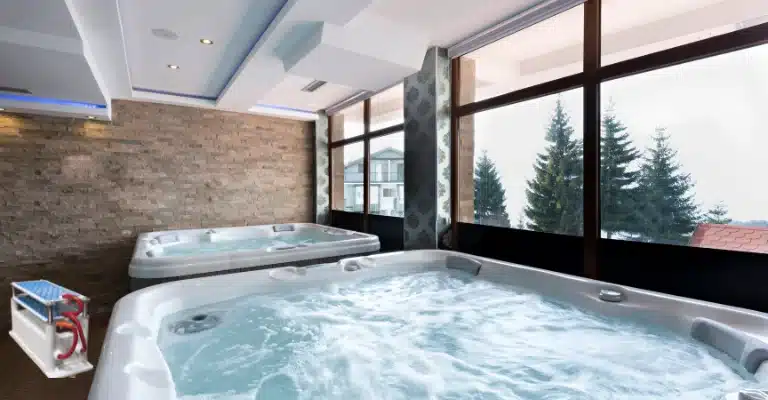
The distinction between ozone and chlorine:
Chlorine is a chemical sanitizer commonly used in hot tubs to kill bacteria and other harmful organisms. Ozone, conversely, is a gaseous substance generated on the premises and introduced into the water.
While chlorine and ozone effectively sanitize hot tub water, ozone is considered a more powerful and natural sanitizer that doesn’t leave any chemical residue behind.
How to Choose the Right Hot Tub Ozonator
- Keep the ozonator running 4–6 hours daily (follow your model’s recommendation)
- Still test water 2–3 times per week for pH and sanitizer levels
- Use a small amount of chlorine or bromine as a backup sanitizer
- Clean or replace the ozone injector and check valves every few months
1. Comparing Different Types of Ozonators:
Several types of ozonation are on the market, including corona discharge, UV, and CD-UV hybrids. Each category possesses its merits and demerits, thus it is imperative to conduct thorough research and opt for the option that most aptly aligns with your requirements.
2. Best Ozonator Brands on the Market:
Many different ozonator brands are on the market, but some of the most popular include Del Ozone, Prozone, and Aqua Sun. Researching and choosing a reputable brand with a quality and reliability track record is essential.
3. Overview of the Installation Process:
Installing a hot tub ozonator typically involves attaching the ozonator to the hot tub plumbing and electrical system. This may require cutting into the hot tub plumbing, wiring the ozonator to the control box, and installing the ozonator itself in a convenient location.
4. Tools and Materials Required:
The tools and materials required for installing a hot tub ozonator can vary depending on the specific model and installation method. Standard tools and materials may include a hacksaw or pipe cutter, PVC pipe and fittings, electrical wire, connectors, and mounting hardware.
Tips for Installation:
When installing a hot tub ozonator, it’s essential to follow the manufacturer’s instructions carefully and ensure that all connections are secure and watertight. It’s also important to turn off the hot tub’s electrical supply and drain the water before beginning installation.
How to Maintain a Hot Tub Ozonator
1. Regular Cleaning and Maintenance:
Regular cleaning and maintenance are essential to ensure the optimal performance of your hot tub ozonator. This includes cleaning the ozonator cell regularly, replacing the ozone check valve periodically, and checking the electrical connections for signs of wear or damage.
2. Common Problems and Solutions:
Several common problems can occur with hot tub ozonators, including low ozone output, leaking ozone tubing, and a blown fuse. Solutions to these problems may include adjusting the ozonator settings, replacing faulty tubing or connectors, or replacing the ozonator altogether.
3. How to Troubleshoot Ozonator Issues:
If you’re experiencing problems with your hot tub ozonator, you can take several troubleshooting steps. These include checking the power supply, ozone output, and ozone tubing for leaks or obstructions. If you need help with troubleshooting the issue, it’s best to contact a professional hot tub technician for assistance.
The Lifespan of a Hot Tub Ozonator
1. Average Lifespan of an Ozonator:
The average lifespan of a hot tub ozonator can vary depending on factors like usage frequency, maintenance, and environmental conditions. However, most ozonators are designed to last several years, with some models lasting up to five years or more.
2. Signs That Your Ozonator Needs to be Replaced:
Several signs may indicate that your hot tub ozonator needs to be replaced, including reduced ozone output, unusual noises or vibrations, and signs of wear or damage to the ozonator unit. If you notice these signs, having your Ozonator inspected and replaced is essential.
3. How to Extend the Life of Your Ozonator:
To extend the lifespan of your hot tub ozonator, it’s essential to follow a regular maintenance schedule and avoid overworking the unit. This may include standard cleaning and inspection of the Ozonator cell, avoiding overloading the hot tub with excessive chemicals or users, and ensuring the hot tub system is balanced correctly and maintained.
Ozonator vs. Other Types of Hot Tub Sanitizers
| Type of Sanitizer | Advantages | Disadvantages |
|---|---|---|
| Ozonators | – Reduce the need for harsh chemicals – Improve water quality – Environmentally friendly | – High upfront cost – May not effectively sanitize in all situations – Requires electricity |
| Chlorine | – Effective at killing bacteria and viruses – Affordable | – Can be harsh on the skin and eyes – May require frequent testing and adjusting – Strong odor |
| Saltwater Systems | – More natural-feeling water – Can be less harsh on the skin and eyes – Low ongoing maintenance costs | – Higher upfront cost – Can be corrosive to hot tub components – May not be effective in extreme temperatures or high usage situations |
Note: The advantages and disadvantages listed above are not exhaustive and may vary depending on the specific type of sanitizer and hot tub system.
Safety Considerations
- Ozone exposure: High ozone levels can cause respiratory irritation and other health problems. Follow manufacturer instructions and keep your hot tub well-ventilated to prevent ozone buildup.
- Electric shock: Ozonators require electricity to function, so using them properly is essential to avoid electric shock. Follow installation and usage instructions carefully and avoid touching electrical components when operating the ozonator.
- Chemical exposure: While ozonators reduce the need for harsh chemicals in hot tubs, it’s still important to handle and store any substances properly to avoid skin and eye irritation or other health problems.
Ozonator Regulations & Legal Considerations
Hot tub ozonators improve water quality, but must be used safely and legally. Here’s what you need to know:
- Ozone Limits: Most jurisdictions cap ozone levels at 0.1 ppm to avoid health risks.
- Certification: Ozonators should meet UL 1647 safety standards.
- Ventilation: Ozone must vent at least 6–12 inches above the water level to dissipate safely.
- Signage: Warning signs are required when ozonators are active.
- Maintenance: Regularly inspect and clean filters, surfaces, and ozone equipment.
- Ozone-Safe Parts: Use gaskets and seals specifically rated for ozone exposure.
- Electrical Safety: Hire a licensed electrician for installation to meet electrical codes.
- Permits: Some regions may require inspections or permits. Check local rules before installing.
To enjoy the benefits of ozonation without risk, always follow guidelines for safe ozone management.
How to troubleshoot common ozonator problems
If you’re experiencing problems with your ozonator, here are some common issues and how to fix them:
- The ozonator is not producing ozone: Check the power supply, the ozone cell, and the flow rate.
- Low ozone output: Check the airflow, ozone generator, and the ozonator cell.
- Ozonator is producing a foul odor: Check for contamination, worn out ozone generator or cell, and the type of ozonator used.
- Ozonator produces inconsistent ozone output: Check the flow rate and ensure the ozonator is not overheating.
- Ozonator is producing a weak ozone output: Check the air supply, ensure the ozonator is grounded correctly, and check for blockages in the ozone cell.

